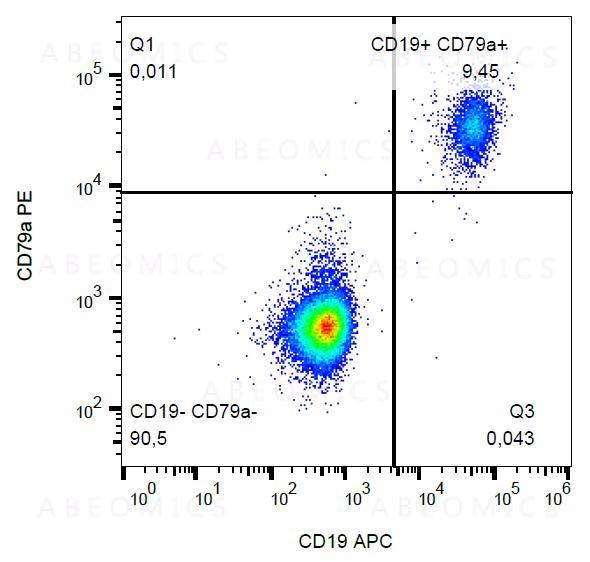| |
| Gene : | CD79A |
| Gene ID : | 973 |
| Uniprot ID : | P11912 |
| Alternative Name : | CD79A, IGA, MB1 |
| Immunogen Information : | Synthetic peptide corresponding to amino acids 202-216 of human CD79a |
CD79a (Ig alpha, MB1) forms disulfide-linked heterodimer with CD79b (Ig beta). They both are transmembrane proteins with extended cytoplasmic domains containing immunoreceptor tyrosine activation motives (ITAMs), and together with cell surface immunoglobulin they constitute B-cell antigen-specific receptor (BCR). CD79a and b are the first components of BCR that are expressed developmentally. They appear on pro-B cells in association with the endoplasmic reticulum chaperone calnexin. Subsequently, in pre-B cells, CD79 heterodimer is associated with lambda5-VpreB surrogate immunoglobulin and later with antigen-specific surface immunoglobulins. At the plasma cell stage, CD79a is present as an intracellular component. CD79a/b complex interacts with Src-family tyrosine kinase Lyn, which phosphorylates its cytoplasmic ITAM motives to form docking sites for downstream signaling.
| Subcellular location: | Cell membrane |
| Post transnational modification: | Arginine methylation in the ITAM domain may interfere with the binding of SYK. It promotes signals leading to B-cell differentiation (By similarity). |
| Tissue Specificity: | B-cells. |
| BioGrid: | 107411. 53 interactions. |
| There are currently no product reviews
|
